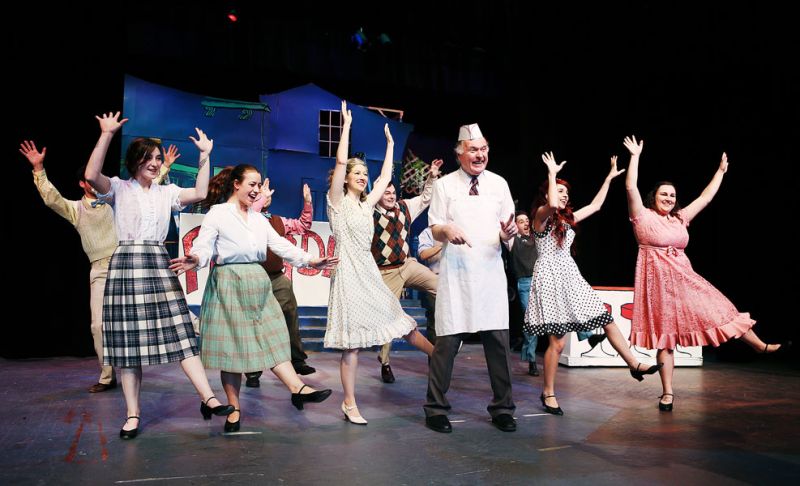Ossie Bladine: Ushering in the arts industry
When it comes to economic development, the arts industry is often viewed as a complementary asset at best — a contributor perhaps, but certainly not a mainstay.
Conventional reasoning has it that a vibrant artistic and cultural community can improve local livability, thus serve as a tool in the recruitment of new industrial, agricultural or financial endeavors. But it’s the latter that really count, not the former.
Well, it’s time to change that line of thinking.
When it comes to the economic engines driving job growth in Yamhill County, arts and culture rank right up there with the rest of the big boys. And thanks to a new study, we have the numbers to prove it.
Yamhill County was one of 341 participants in an Arts and Economic Prosperity 5 study, conducted by Americans for the Arts. The study was designed to determine the economic impact of the nonprofit arts and cultural sector, and the local results, unveiled by the Yamhill County Cultural Coalition, proved eye-opening.
The 53 nonprofits meeting the criteria generated spinoff spending in the larger community totaling just over $20 million in fiscal 2015, the most recent year for which data has been analyzed. That spending supported the equivalent of 717 full-time jobs, recorded as FTE.
Associated spending by participants in events and programs sponsored by nonprofits ran just under $25 million and supported 433 FTE. Taken together, they show the arts industry contributing about $45 million to the economy and supporting about 1,150 FTE on local payrolls.
Comparatives with other geographic areas were as impressive as the raw numbers, as the per capita mean for Yamhill County exceeded those of other participating regions and the nation as a whole.
The Portland Metro Area generated 333.4 million in arts spending. That’s seven times what Yamhill County generated, but Portland Metro has 24 times the population, so lagged badly on a per capital basis.
For a region better known for agriculture than arts, we’re more than holding our own, thanks to hundreds of hobbyists, volunteers, part-time workers and paid professionals.
And remember, the study was limited to nonprofits. If one were to include spending generated by professional artists, private galleries and creative manufacturing businesses like the William Henry Studio, which makes its home in the McMinnville Industrial Park, it could easily double the reported totals.
The AEP5 study employed an input-output economic analysis tweaked for each participating region.
Several measures were taken to ensure the results erred on the side of understatement rather than over.
For example, spending on events tickets was excluded, because it simply creates revenue for the sponsor. The aim was assessing contribution to the larger economy, through associated spending on food, lodging and so forth.
This wasn’t just some advocacy report filled with fluff. It was a scientific study producing hard data, and thus paints a picture well worth examining.
The data showed the nonprofit arts and culture sector generated just under $1.5 million in local government revenue, along with a like sum in state government revenue. Across Oregon, arts and culture jobs delivered $53 million in local and state government revenue.
There is no doubt that arts programs are appreciated in our region. Attend a Gallery Theater play, outdoor music concert, film or writing festival and you’ll see logos from local businesses agreeing to serve as sponsors.
In part, those businesses invest in arts because they understand it adds to the livability and culture of the place they call home. But they also understand those events serve as marketing tools, because attendance is dominated by the type of civically engaged people they are trying to attract.
It’s common to bump into a local elected government official at a museum event or community band engagement. Our officials value arts and culture themselves, in large measure.
Hopefully, the results of the AEP5 study, and the followup presentations the study is generating, will drive our councils, commissioners and planners to consider the creative industries not just as complementary assets, but as a primary source of the fuel powering the economic engines of our region.
We should embrace these findings and discover new ways to encourage growth on the creative side. With a united vision in place, we should be able to double today’s $45 million contribution within a matter of years.
It’s time to stop talking of “the arts” and begin talking about “the arts industry.” That simple change in mindset could serve to usher in a whole new era for Yamhill County.
Ossie Bladine is editor of the News-Register, president of the Yamhill County Cultural Coalition and founder of the Walnut City Music Festival, now in its fifth year.














Comments